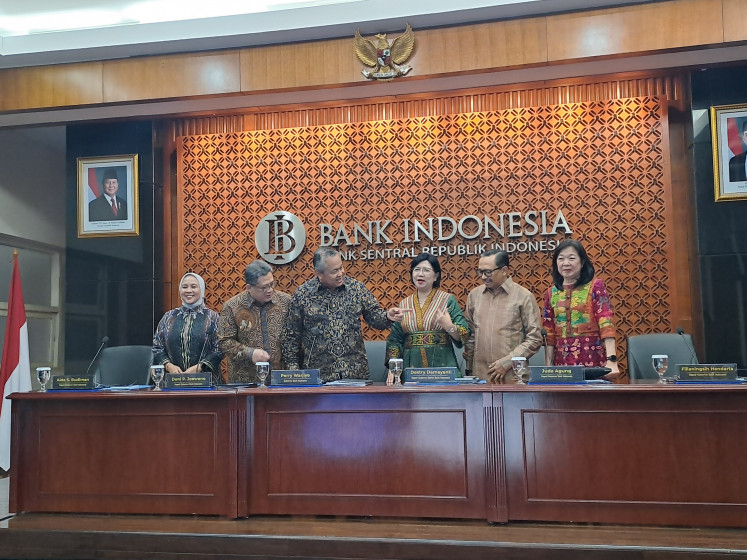Popular Reads
Top Results
Can't find what you're looking for?
View all search resultsPopular Reads
Top Results
Can't find what you're looking for?
View all search resultsEditorial: Tackling inequality, land conflict
The business community should not be surprised, nor inordinately worried, about the March regulation of the Environment and Forestry Ministry regarding the reallocation of up to 30 percent of industrial forests and forest concession areas to indigenous people
Change text size
Gift Premium Articles
to Anyone
T
he business community should not be surprised, nor inordinately worried, about the March regulation of the Environment and Forestry Ministry regarding the reallocation of up to 30 percent of industrial forests and forest concession areas to indigenous people.
Rather, business players should have anticipated the regulation after the Constitutional Court's ruling in May 2013 that the customary forests of indigenous peoples should not be classed as State Forest Areas.
The civil society organization for indigenous people's rights (AMAN) that asked for the juidicial review of the 1999 Forestry Law quoted the government's own statistics in 2012 that revealed that there were some 32,000 villages whose lands overlapped areas classed as State Forest Areas, as defined in the 1999 Forestry Law.
As such, the March 2015 regulation issued by the Environment and Forestry Ministry serves only as a guideline for enforcing the court ruling to restore the rights of indigenous peoples over their customary forests, which 'had been seized by the state through the 1999 forestry law', as AMAN put it.
The frontpage headline story of Tuesday's edition of this newspaper read 'Govt to redistribute land'. This was perhaps overblown, given that the essence of the regulation is simply to correct the error made in the 1999 Forestry Law and to return customary forests to their rightful owners. AMAN itself has estimated that 40 million indigenous peoples now are the rightful owners of the customary forests that have been the source of their livelihoods for generations.
In our view, the latest forestry regulation also aims to put an end to the perpetual land disputes in many areas between forest concessionaires and local people caused by the 1999 Forestry Law's definition of state forestry areas.
Even more important is that the regulation also aims at preventing inequality from widening. Public opinion is increasingly in favor of enhancement of inclusive and sustainable development in the agricultral sector and other resource-based industries. In the tree crop plantation sector, for example, large companies are required by the 2014 Plantation Law to allocate at least 20 percent of the total acreage of their plantation areas to smallholders through bank financing, processing and marketing arrangements.
Many companies now own and manage pulp and tree crop (mainly oil palm) plantations ranging in size from a few hundred thousand to one million hectares. We are afraid that if this condition is not gradually corrected, mounting problems of inequality of income, wealth and land conflicts could threaten the long-term sustainability of the plantation industry, even the macroeconomic stability.
We believe that harmonious and mutually-beneficial cooperation between big plantations and smallholders is the most effective way of expanding tree-crop plantations such as oil palm and rubber without widening inequality in landholding.










